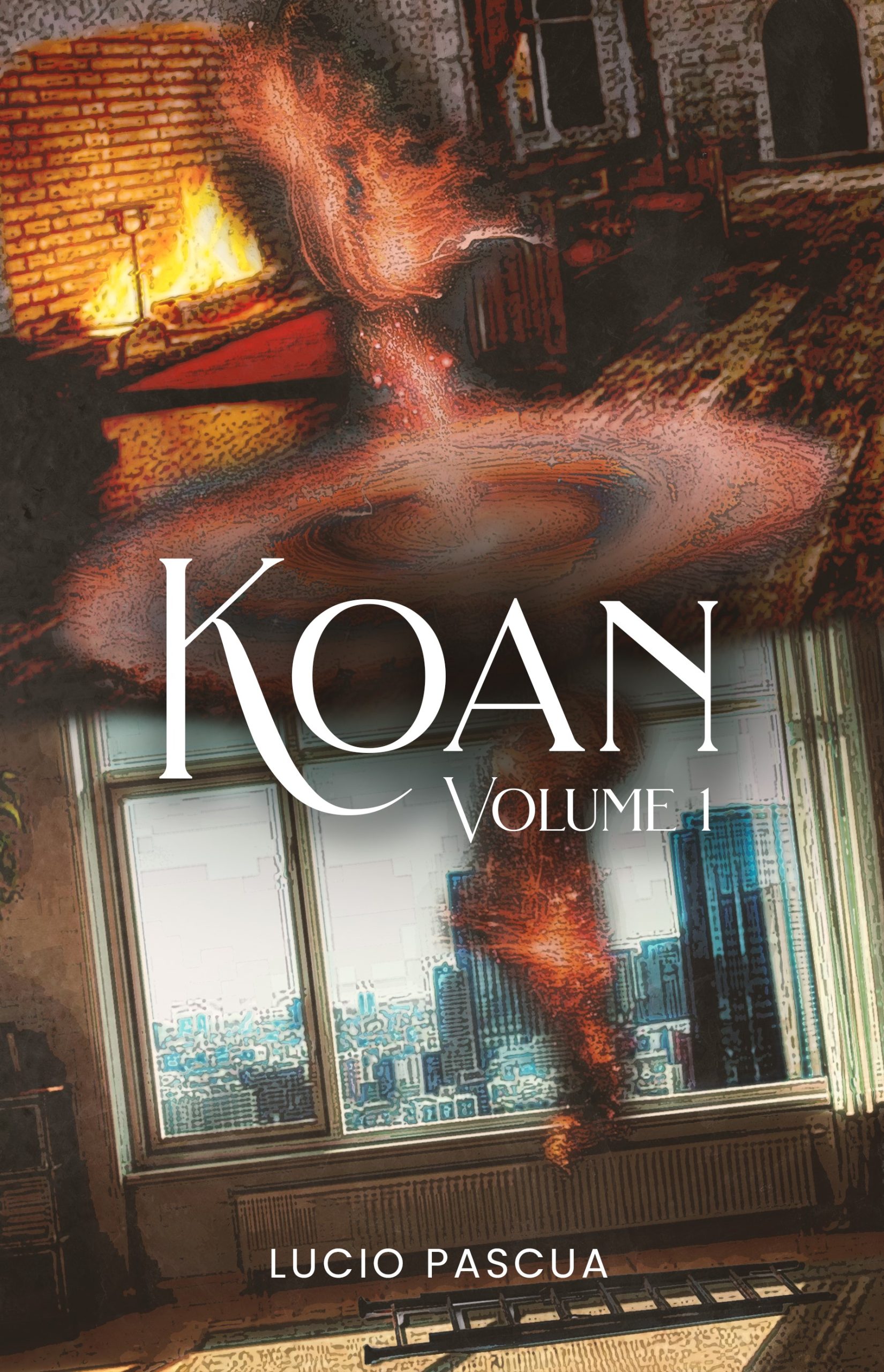In every great story that lingers in the mind, some figures feel larger than life, beings who don’t just move through the plot but shape the moral and cosmic fabric of their world. In KOAN by Lucio Pascua, two figures appear from the tapestry of myth and philosophy. One is the Northern Tortoise, and the other one is the Eastern Dragon. They are not merely characters but ideas given form. They embody a worldview that threads through the novel’s richly woven blend of literary fiction, philosophical fantasy, and magical realism.

The Northern Tortoise, armored in its plastron and holding a prayer mound and a spear, rules over the cold night. It is a creature of paradox, both protector and prophet. KOAN depicts it as the first to be summoned when the universe is threatened, listening endlessly to faith teachings and foretelling futures with calm certainty. This kind of guardian speaks to the deeper currents of allegorical fiction: dedicated, prehistoric, and unshaken by the present chaos. It’s not hard to see why it resonates so strongly; it is a reminder of strength, of wisdom that doesn’t fade under the weight of centuries.
Beside it, the Eastern Dragon is a more fluid figure, tied to air, motion, and the unseen threads that bind events together. Where the Tortoise suggests grounded perseverance, the Dragon represents expansion, dreams reaching beyond the horizon. In KOAN, the Eastern Dragon’s role in forging the Guardians’ deal speaks to the novel’s metaphysical fantasy core: unity and the constant cooperation between order and change. The Dragon is not a beast of destruction but of creation; its power lies not in successful but in weaving the cosmic balance.
Within the speculative fiction landscape of KOAN, these two beings become philosophical standards. They are not simply mythological flourishes; they frame the reader’s understanding of the novel’s central question: how can cosmic order be preserved without resorting to violence? Their presence lends weight to the book’s satire of modern politics, science, and religion. In a world where human leaders cling to control through fear or force, the Northern Tortoise and Eastern Dragon suggest another way: a partnership rooted in protection, foresight, and respect for life’s interconnectedness.
The guardians are fantastical, yet they exist within a history that treats them with the same gravity as historical fact. Their speeches, actions, and symbolic gestures bleed seamlessly into the everyday lives of the other characters, erasing the boundary between myth and reality. As readers, we are invited to see them not as unsociable gods but as fellow citizens in the same cosmic village whose influence shapes grand and intimate decisions.
In allegorical terms, the Northern Tortoise and Eastern Dragon can be read as twin shares of human aspiration: stability and possibility. The Tortoise grounds us, teaching patience and the importance of preserving tradition. The Dragon lifts us, reminding us that imagination and adaptability are essential to survival. Together, they reflect the core of KOAN’s literary fiction heart, stories that are as much about the inner journey as they are about the outer world.
Ultimately, KOAN uses these mythical creatures to challenge our assumptions about power, protection, and progress. They are not there to fight wars or collapse kingdoms. They are there to express the truth that the novel repeatedly returns to, which asserts that real strength lies not in domination but in the harmony between what sustains and what evolves. In a world shaken between chaos and order, the Northern Tortoise and Eastern Dragon remind us that peace is not the absence of conflict but the presence of balance.
If you’ve ever wondered what it might look like for myth to walk along philosophy, or for prehistoric wisdom to stand guard over the future. In that case, KOAN offers an unforgettable vision in that case, and these two guardians lead the way.
Read this book to redefine your perspective on life and your choices: https://www.amazon.com/dp/1968615466.